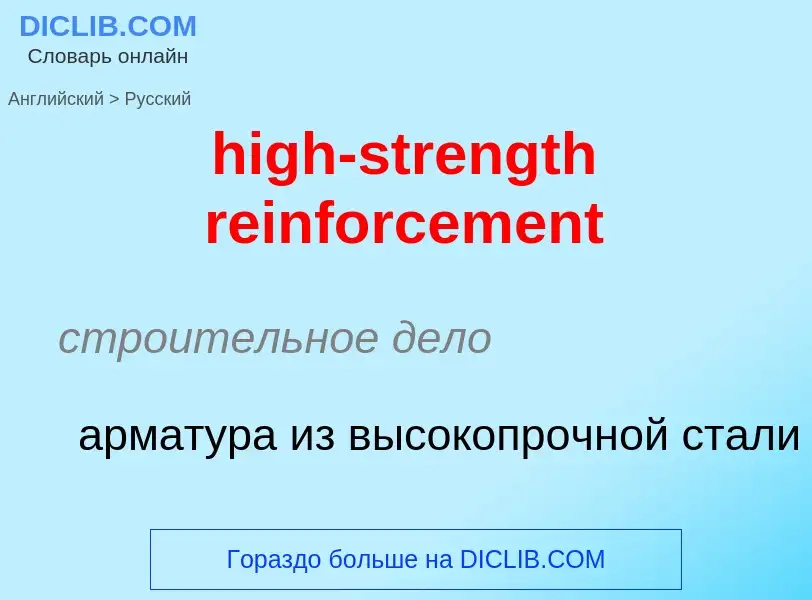Перевод и анализ слов искусственным интеллектом ChatGPT
На этой странице Вы можете получить подробный анализ слова или словосочетания, произведенный с помощью лучшей на сегодняшний день технологии искусственного интеллекта:
- как употребляется слово
- частота употребления
- используется оно чаще в устной или письменной речи
- варианты перевода слова
- примеры употребления (несколько фраз с переводом)
- этимология
high-strength reinforcement - перевод на русский
строительное дело
арматура из высокопрочной стали
общая лексика
негативное подкрепление
медицина
отрицательное подкрепление
строительное дело
рабочая арматура, воспринимающая усилия от отрицательных изгибающих моментов (в зоне промежуточных опор)
общая лексика
арматурный
армирующий
упрочняющий
усиление
усиливающий
строительное дело
армирование (бетона)
усиление (конструкций)
арматура
[ri:in'fɔ:smənt]
общая лексика
подкрепление
усиление
арматура
армирование
армировка
укрепление
упрочнение
строительное дело
элемент жесткости
арматура (железобетона)
армирование (строительных конструкций)
существительное
общая лексика
усиление
укрепление
армирование
военное дело
подкрепление
пополнение
строительное дело
арматура
специальный термин
закрепление (условного рефлекса, навыка; особ. системой поощрений)
система поощрений (особ. подопытного животного)
медицина
подкрепляющий раздражитель
Википедия

Maraging steels (a portmanteau of "martensitic" and "aging") are steels that are known for possessing superior strength and toughness without losing ductility. Aging refers to the extended heat-treatment process. These steels are a special class of very-low-carbon ultra-high-strength steels that derive their strength not from carbon, but from precipitation of intermetallic compounds. The principal alloying element is 15 to 25 wt% nickel. Secondary alloying elements, which include cobalt, molybdenum and titanium, are added to produce intermetallic precipitates. Original development (by Bieber of Inco in the late 1950s) was carried out on 20 and 25 wt% Ni steels to which small additions of aluminium, titanium, and niobium were made; a rise in the price of cobalt in the late 1970s led to the development of cobalt-free maraging steels.
The common, non-stainless grades contain 17–19 wt% nickel, 8–12 wt% cobalt, 3–5 wt% molybdenum and 0.2–1.6 wt% titanium. Addition of chromium produces stainless grades resistant to corrosion. This also indirectly increases hardenability as they require less nickel; high-chromium, high-nickel steels are generally austenitic and unable to transform to martensite when heat treated, while lower-nickel steels can transform to martensite. Alternative variants of nickel-reduced maraging steels are based on alloys of iron and manganese plus minor additions of aluminium, nickel and titanium where compositions between Fe-9wt% Mn to Fe-15wt% Mn have been used. The manganese has a similar effect as nickel, i.e. it stabilizes the austenite phase. Hence, depending on their manganese content, Fe-Mn maraging steels can be fully martensitic after quenching them from the high temperature austenite phase or they can contain retained austenite. The latter effect enables the design of maraging-TRIP steels where TRIP stands for Transformation-Induced-Plasticity.



